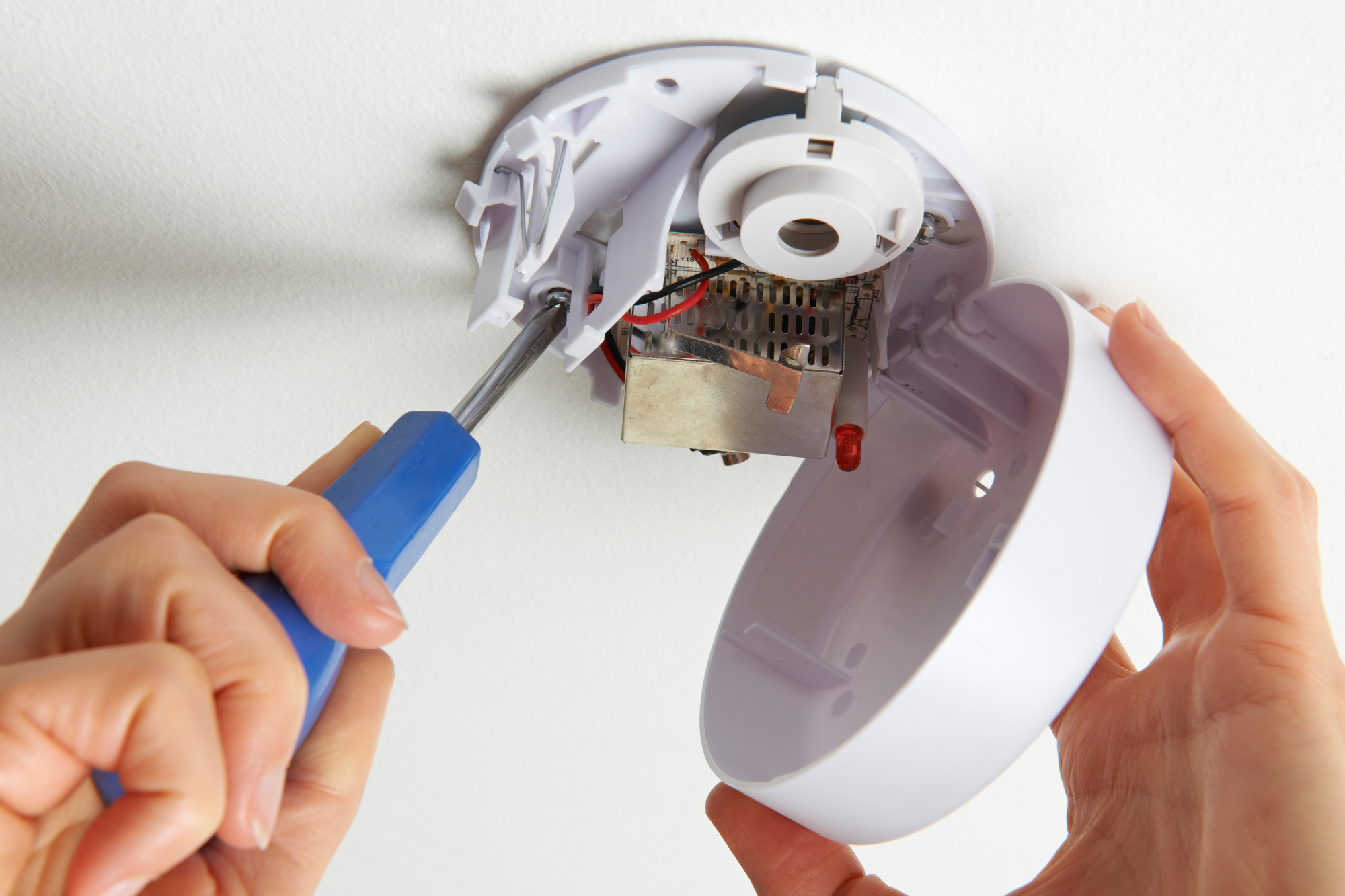Smoke detectors play an integral role in ensuring the safety of homes and workplaces alike. These fire safety devices are often overlooked, tucked away in corners of rooms, only demanding attention in an emergency or when their batteries require changing.
Smoke detectors provide early warning of a potentially catastrophic event, such as a fire, which, if detected in time, could allow for swift evacuation and potentially save lives. However, owning these devices isn’t enough; the significance of correct installation and maintenance can’t be overstated. Knowing how to install and maintain smoke detectors properly can save lives and prevent catastrophic property damage in the event of a fire.
Here’s what you should know about smoke detector installation and maintenance:
Different Types Of Smoke Detectors
It’s essential to know that smoke detectors aren’t created equally. For this reason, you should familiarize yourself with the various types of smoke detectors you may install in your house or workplace. Doing so can help you find the right fire safety devices to install on your premises.
Generally, there are two main kinds of smoke detectors: ionization and photoelectric smoke detectors. Ionization detectors react quicker to flaming fires; meanwhile, photoelectric detectors respond faster to smoldering fires. But for comprehensive protection, consider installing dual-sensor smoke alarms that contain both types. This way, you can ensure proper installation of smoke detectors and, in turn, make the most out of your investment.
Where To Install The Smoke Detectors
One of the essential things you should know about smoke detector installation is the areas where you can have these fire safety devices.
Initially, one must understand where to place the smoke detectors. Per most fire safety guidelines, smoke detectors should be installed on every level of the house, outside each sleeping area in your property, as well as in every sleeping room. For office buildings or commercial spaces, meanwhile, a professional survey may be required to determine the best locations for smoke detectors.
To boot, experts recommend placing smoke detectors on the ceiling to better detect smoke as it rises. If installing on the wall, it should be placed at least a foot below the ceiling. Lastly, avoid installing smoke detectors near windows, doors, or ducts where drafts could interfere with their operation.
Steps Involved In The Installation Process
Once the appropriate detectors are chosen and locations identified, the installation process can begin. It generally involves drilling holes into the ceiling or wall, inserting the mounting plugs, attaching the mounting bracket, and finally, connecting and mounting the smoke detector. Carefully follow the manufacturer’s instructions to ensure the detectors are installed correctly.

While installation can often be completed by individuals in larger structures or complex settings, it might be best to hire professionals to ensure safety standards are met. For example, electrical service providers are needed to install smoke detectors since they’re familiar with proper placement and wiring. They have the tools and equipment to speed up the installation process efficiently and quickly too. Lastly, they can help you pick the right smoke detectors for your needs.
Essential Maintenance Tasks Needed
After the installation, it’s crucial to understand the ongoing maintenance required to keep the smoke detectors in good working condition. Regular maintenance can significantly increase the efficiency and lifespan of these devices. With the increasing risk of fires and the devastation they bring, the need for effective smoke detection becomes paramount.
Thus, the following are some maintenance tasks to consider when it comes to smoke detectors:
Testing
It’s vital to test the smoke detectors monthly by pressing the test button. It’ll help confirm they’re working correctly without any issues. Nonetheless, if the alarm doesn’t sound, it’s a sign that something is wrong with your fire safety devices. For instance, it can be a signal to replace the batteries and test again. If it still fails, it’s a good idea to replace the entire smoke detector.
Battery Replacement
Replace the batteries at least once a year, even if the detector hasn’t signaled that the battery is low. A good rule of thumb is to change the batteries when changing the clocks for daylight saving time. Yet always use the type of batteries recommended by the manufacturer to avoid any problems in the future.
Cleaning
Dust and debris can interfere with the smoke detector’s efficient operation. Henceforth, vacuum or dust your smoke detectors regularly to prevent false alarms and ensure proper function. Avoid painting or decorating smoke detectors as this could block the sensor as well.
Smoke Detector Replacement
Always remember that smoke detectors have a service lifespan. Regardless of their test performance, replace all smoke detectors every ten years or as recommended by the manufacturer. As smoke detectors age, their sensors can become less sensitive, reducing their effectiveness.
Proper maintenance of smoke detectors is an essential aspect of fire safety. By considering these maintenance tasks, you can keep yourself, your family, and your property safe from fire and other safety hazards.
Conclusion
Smoke detector installation and maintenance are important in both residential and commercial spaces. Therefore, keep these things in mind so you can contribute to a safer living and working environment. Remember, it’s not just about installing smoke detectors but it’s also about saving lives.